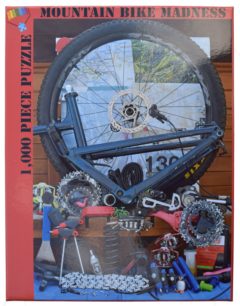If you’re a puzzle enthusiast, you know that completing a puzzle can be a relaxing and rewarding experience. However, the process can also be time-consuming and require a lot of space. That’s where puzzle accessories come in. In this post, we’ll explore some must-have puzzle accessories that can make the puzzle experience easier, more organized, and more enjoyable.
Puzzle Mats
One of the biggest challenges of completing a puzzle is finding enough space to work on it. Puzzle mats solve this problem by allowing you to roll up your puzzle and store it until you’re ready to work on it again. These mats come in a variety of sizes and materials, from felt to neoprene, and can be used with puzzles of all sizes. Simply lay the mat out, work on your puzzle, and then roll it up and store it until you’re ready to work on it again.
Sorting Trays
Sorting trays are another must-have puzzle accessory. These trays are designed to help you organize your puzzle pieces by color, shape, and edge pieces. They come in a variety of sizes and materials, and many are stackable for easy storage. By using sorting trays, you can easily find the pieces you need and keep your puzzle organized as you work on it.
Puzzle Glue
Once you’ve completed your puzzle, you’ll want to preserve it for display. Puzzle glue is a must-have accessory for this process. This glue is designed to keep your puzzle pieces together and prevent them from falling apart. It comes in a variety of brands and types, including spray adhesive and brush-on glue. Once you’ve glued your puzzle, you can frame it for display in your home or office.
Puzzle Rollers
If you’re working on a large puzzle, a puzzle roller can be a helpful accessory. These rollers are designed to help you flatten out your puzzle and remove any air bubbles. They can also be used to transport your puzzle from one location to another, without damaging the pieces.
Puzzle Boxes and Carriers
If you’re a serious puzzle enthusiast, you may have multiple puzzles in progress at the same time. Puzzle boxes and carriers can help you keep your puzzles organized and prevent pieces from getting lost. These boxes come in a variety of sizes and materials, and many have multiple compartments for storing puzzle pieces.
Puzzle Lighting
Finally, puzzle lighting can make a big difference in the puzzle experience. Adequate lighting is important for reducing eye strain and helping you see the details of the puzzle pieces. LED lamps, desk lamps, and overhead lighting can all be used to provide the right amount of light for completing your puzzle.
Conclusion
Puzzle accessories can make the puzzle experience easier, more organized, and more enjoyable. Whether you’re working on a small puzzle or a massive 5000-piece puzzle, there are accessories that can help you complete the puzzle with ease. From puzzle mats and sorting trays to puzzle glue and carriers, these accessories can enhance your puzzle experience and help you achieve a perfect result every time.
